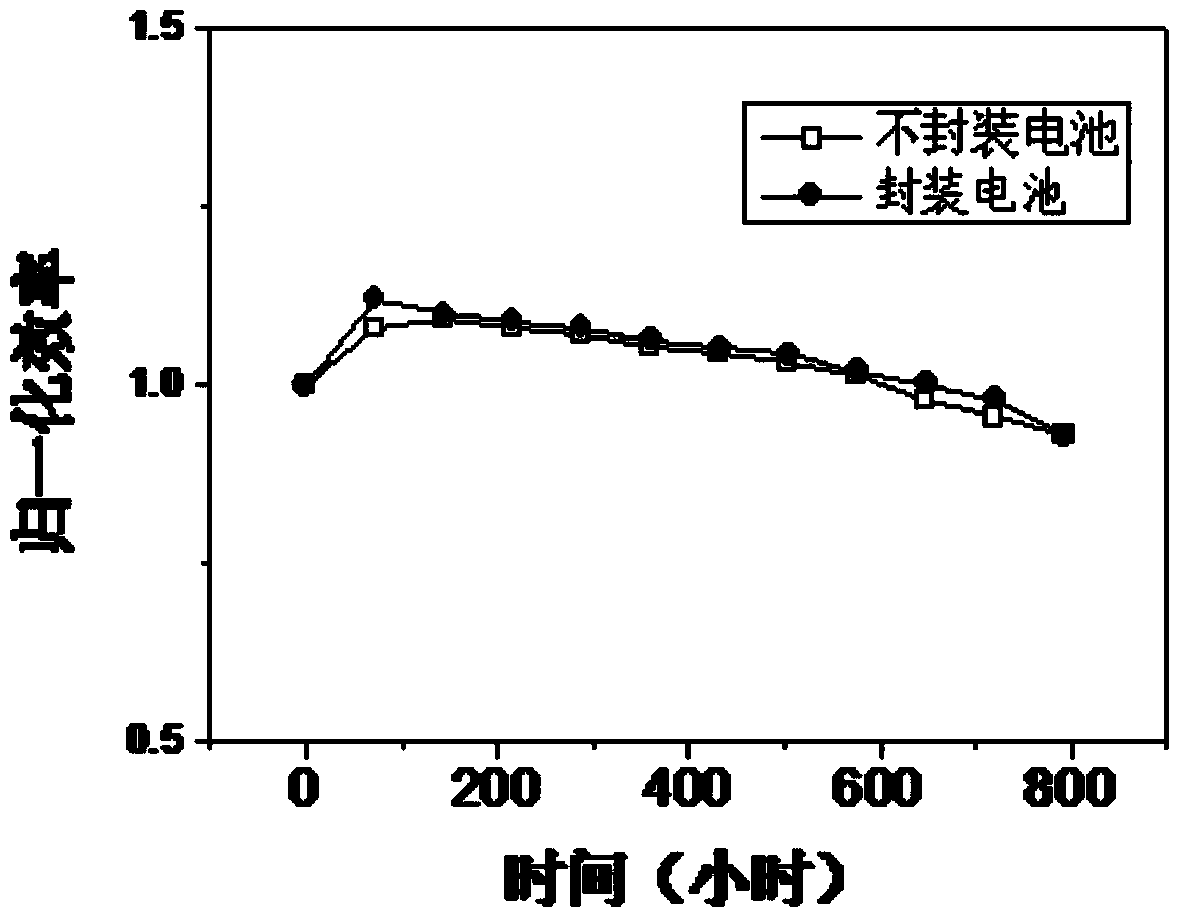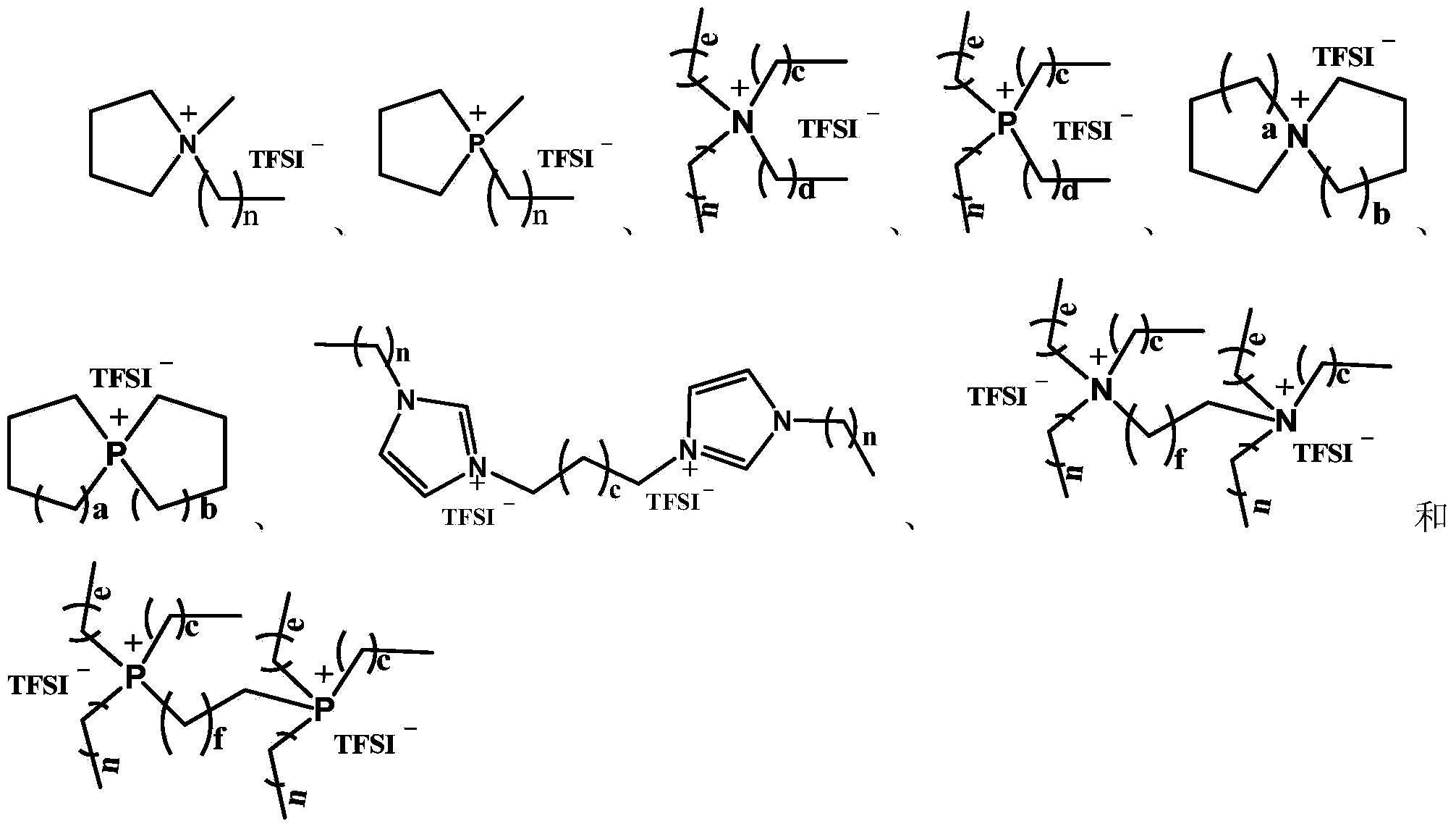Plastic crystal-based hydrophobic solid electrolyte and application thereof
A technology of solid electrolytes and plastic crystals, applied in capacitor electrolytes/absorbents, photovoltaic power generation, capacitor components, etc., can solve problems such as increasing the cost of solar cells and affecting the stability of solar cells, achieving high stability and photoelectric conversion efficiency , high stability, low cost effect
- Summary
- Abstract
- Description
- Claims
- Application Information
AI Technical Summary
Problems solved by technology
Method used
Image
Examples
Embodiment 1
[0028] Prepare a hydrophobic solid electrolyte and measure the conductivity:
[0029] 0.8g 0.05g 0.1g After 0.05g of NBB is ground evenly, place it in a tablet press and press it into a 1cm*1cm sheet at 10-20MPa, sandwich these sheets between two stainless steel electrodes, so that the contact area between the sheet and the stainless steel electrode is 1cm *1cm, connected to the electrochemical workstation with the two-electrode method, the conductivity measured was 1.9×10 –4 S cm –1 .
[0030] Assemble a dye-sensitized solar cell and measure its performance:
[0031] Clean the FTO conductive glass with ultrasonic waves and immerse it in 40mM TiCl at 70°C 4 Keep it in the aqueous solution for 30min, so as to form a layer of dense TiO on the surface of FTO conductive glass 2 Then take out the FTO conductive glass, rinse it with ethanol and dry it naturally; apply the P25 slurry and P400 slurry on the TiO2 film respectively by scraping technology to form TiO2 with a th...
Embodiment 2
[0034] Dye-sensitized solar cells were assembled using the same method as in Example 1, and their photoelectric conversion efficiency was tested. The difference lies in the composition and content of the hydrophobic solid electrolyte. In this example, the hydrophobic solid electrolyte contains 0.5g 0.02g 0.38g 0.1g NBB, the measured conductivity is 1.3×10 –4 Scm –1 , The photoelectric conversion efficiency of the battery is 3.0%.
Embodiment 3
[0036] Dye-sensitized solar cells were assembled using the same method as in Example 1, and their photoelectric conversion efficiency was tested. The difference lies in the composition and content of the hydrophobic solid electrolyte. In this example, the hydrophobic solid electrolyte contains 0.7g 0.024g 0.216g 0.06g NBB, the measured conductivity is 2.4×10 –4 S cm –1 , The photoelectric conversion efficiency of the battery is 2.65%.
PUM
 Login to View More
Login to View More Abstract
Description
Claims
Application Information
 Login to View More
Login to View More - R&D
- Intellectual Property
- Life Sciences
- Materials
- Tech Scout
- Unparalleled Data Quality
- Higher Quality Content
- 60% Fewer Hallucinations
Browse by: Latest US Patents, China's latest patents, Technical Efficacy Thesaurus, Application Domain, Technology Topic, Popular Technical Reports.
© 2025 PatSnap. All rights reserved.Legal|Privacy policy|Modern Slavery Act Transparency Statement|Sitemap|About US| Contact US: help@patsnap.com



